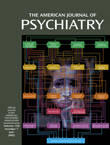Essentials of Clinical Psychopharmacology
Essentials of Clinical Psychopharmacology is a synopsis of the American Psychiatric Press Textbook of Psychopharmacology, 2nd ed., also edited by Schatzberg and Nemeroff. The main goal of the synopsis is to capture and update the most clinically relevant material of the textbook. The audience of the synopsis is intended to be psychiatry residents and primary care physicians.
The book is divided into two major sections. The first, Classes of Psychiatric Treatments, reviews the clinical pharmacological aspects of each drug class. Chapters include subsections on history and discovery, structure-activity relations, pharmacological profile, pharmacokinetics, mechanisms of action, indications, side effects and toxicology, drug-drug interactions, and conclusions. The second section of the book, Psychopharmacological Treatment, provides an overall review of pharmacological therapies of each major psychiatric disorder. There are also chapters on special populations, such as children and the elderly, and chapters on special clinical situations, such as pregnancy, medically ill psychiatric patients, and psychiatric emergencies. There are 31 chapters and an appendix that reviews recently available psychotropic drugs.
The list of contributors is impressive, starting with the section editors, Dennis Charney, Herbert Meltzer, and Donald Klein. The list of contributors is a “Who’s Who” in contemporary psychopharmacology. A minor criticism is that some of the affiliations of the contributors need to be updated.
Of note, only drugs available in the United States are included. This and the fact that all contributors are affiliated with American institutions may represent a limitation to global audiences. A key characteristic of Essentials of Clinical Psychopharmacology is that, although it represents a synopsis of the second edition of the American Psychiatric Press Textbook of Psychopharmacology, it has been updated with new information and references.
The editors of the section on classes of psychiatric treatments have structured each chapter in a systematic way. This feature addresses the main limitation of other edited textbooks in which each chapter covers different aspects of specific topics.
Schatzberg and Nemeroff have accomplished their goal: they have put together a comprehensive synopsis and update of the most relevant clinical information in their textbook on psychopharmacology. The book is also on target for its intended audience, psychiatric residents and primary care physicians. This is an ideal volume for the shelf of those who take care of the mentally ill. I highly recommend this book.



